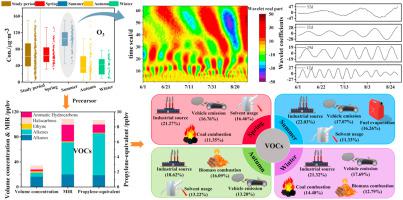Environmental Pollution ( IF 7.6 ) Pub Date : 2023-02-15 , DOI: 10.1016/j.envpol.2023.121293 Yanan Guan 1 , Xuejiao Liu 2 , Zhiyang Zheng 3 , Yanwei Dai 4 , Guimin Du 5 , Jing Han 1 , Li'an Hou 6 , Erhong Duan 1

|
One of the major pollutants influencing urban air quality in China is O3. O3 is the second most important pollutant affecting air quality in Shijiazhuang, which is the third largest city in the Beijing-Tianjin-Hebei area and the provincial capital of Hebei province. To fully understand the characteristics of O3 and volatile organic compounds (VOCs), which are O3 precursors, and the role of VOCs to ozone formation, we measured the hourly concentrations of O3 and 85 VOCs in Shijiazhuang continuously from January to November 2020, and the concentration characteristics of both together with the chemical reactivity and sources of VOCs were analyzed from a seasonal perspective. The O3 concentration in Shijiazhuang showed a phenomenon of high summer and low winter, and the VOCs showed a phenomenon of high winter and low spring. In the summer when the O3 exceedance rate is the highest, the time-domain variation characteristics of O3 were analyzed by wavelet analysis model, and the main periods controlling the O3 concentration variation in Shijiazhuang in summer 2020 were 52 days, 32 days, 19 days and 12 days. The maximum incremental reactivity (MIR) and propylene equivalence method indicated ethene, propylene and 1-pentene were common substances in the top five species of each season. The T/B, Iso-p/N-p, Iso-p/E, N-p/E, and positive matrix factorization (PMF) model showed that industrial source (18.62%–22.03%) and vehicle emission (13.20%–17.69%) were the major VOCs sources in Shijiazhuang. Therefore, to control the O3 concentration in Shijiazhuang, it is necessary to decrease alkenes emissions as well as VOCs from industrial source and vehicle emission.





















































 京公网安备 11010802027423号
京公网安备 11010802027423号